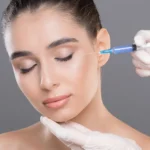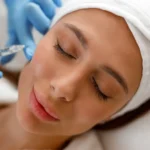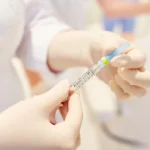
According to the International Society of Aesthetic Plastic Surgery, 2019 witnessed a significant surge in neck lift procedures performed globally, with figures exceeding 260,000. This statistic underscores a broader trend towards comprehensive facial rejuvenation, reflecting a heightened awareness of the neck’s role in overall appearance.
Traditionally overlooked in aesthetic enhancement, the neck has increasingly become a focal point for individuals desiring cosmetic improvements. Poly-L-lactic acid dermal fillers represent a class of non-surgical treatments that provide a temporary but potent means for neck rejuvenation. Specifically, Sculptra injections act as a beneath-the-skin solution, relieving those with crepey or lax skin around the neck.
This article will explore Sculptra injections, how the treatment works on the neck, patient selection, and its efficacy and safety.
Key Takeaways
- Medical professionals can use Sculptra injections off-label for the neck area, as there are only indications for the cheek, nasolabial folds, marionette lines, and chin.
- Sculptra’s collagen stimulation helps restore lost skin volume and reduces the appearance of wrinkles and folds.
- According to the Patient Safety Information, adult individuals with healthy immune systems can benefit most from the treatment.
- Medical professionals must administer these procedures as they know the most appropriate treatment sites and injection techniques.
- A review by Christen (2022) highlighted the effectiveness and safety of poly-L-lactic acid, particularly Sculptra, in rejuvenating the neck and chest.
- In addition, clear communication between doctor and patient about Sculptra’s gradual results and potential side effects aligns expectations with optimal outcomes.
About: Medica Depot is your trusted all-in-one supplier, offering a range of high-quality medical injectables and supplies. Buy Sculptra online at Medica Depot today! Whether for health professionals, plastic surgeons, dermatologists, licensed estheticians, or other specialists, we can offer genuine, brand-name products you may need. With Medica Depot, we prioritize serving you better to improve the patient’s quality of life.
Understanding Sculptra and Its Mechanism of Action
Sculptra injection has received the US Food and Drug Administration approval to address facial rejuvenation. Among Sculptra’s ingredients, this filler takes advantage of poly-L-lactic acid (PLLA). It has specific clinical indications for the following treatment areas:
- Cheek wrinkles
- Deep folds between the nose and mouth (nasolabial folds), also called “smile lines”
- Lines framing the mouth (marionette lines)
- Chin wrinkles
Medical professionals can use Sculptra injections off-label for the neck area, as there are only indications for the above-mentioned treatment areas. When injected into the neck, the PLLA microparticles in Sculptra work beneath the skin to help restore the skin’s inner structure.
Moreover, it stands out from other dermal fillers due to its mechanism of action, which works in the skin’s deep layers. Sculptra injections stimulate collagen production and gradually restore the skin’s quality. This mechanism of action leads to longer-lasting outcomes due to the slow rebuilding of the collagen strands.
Sculptra’s collagen stimulation helps restore lost skin volume and reduces the appearance of wrinkles and folds. Collagen stimulators like Sculptra trigger the skin’s natural collagen production, replenishing skin volume and firmness over time.
Patient Selection Criteria for Sculptra Neck Treatment
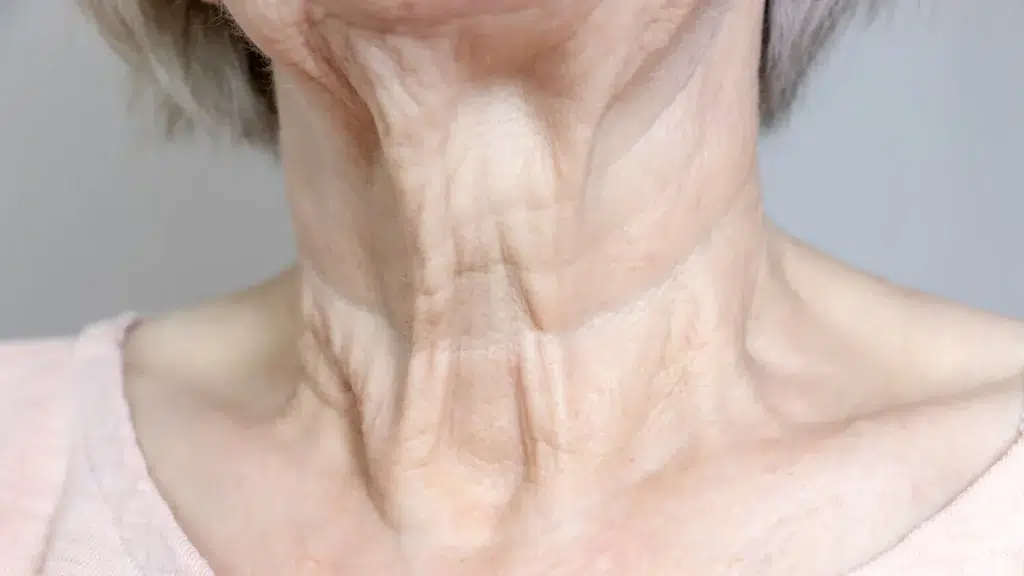
Individuals should seek and consult a medical professional to ensure that they are suitable candidates for Sculptra for neck or Sculptra for nasolabial folds injections. According to the Patient Safety Information, adult individuals with healthy immune systems can benefit most from the treatment.
Tailoring treatment plans can ensure patient safety and optimal Sculptra results. A thorough consultation with a medical professional can help patients determine whether they can receive the treatment. It’s worth noting that Sculptra also has contraindications that individuals must avoid to prevent further complications.
- Have severe allergies with a history of severe reactions or multiple severe allergies.
- Are allergic to Sculptra ingredients, such as poly-L-lactic acid, carboxymethylcellulose, etc.
- Previously had or have risk factors for hypertrophic scarring or keloid formation.
Patients may expect to experience common side effects after Sculptra treatments. It’s worth noting that these reported symptoms may resolve within a few days or weeks as the body adapts to the medication.
- Injection site pain
- Redness
- Bruising
- Tenderness
- Itching
- Lumps
- Bleeding
- Swelling
Overview of the Sculptra Treatment Procedure for Neck Rejuvenation
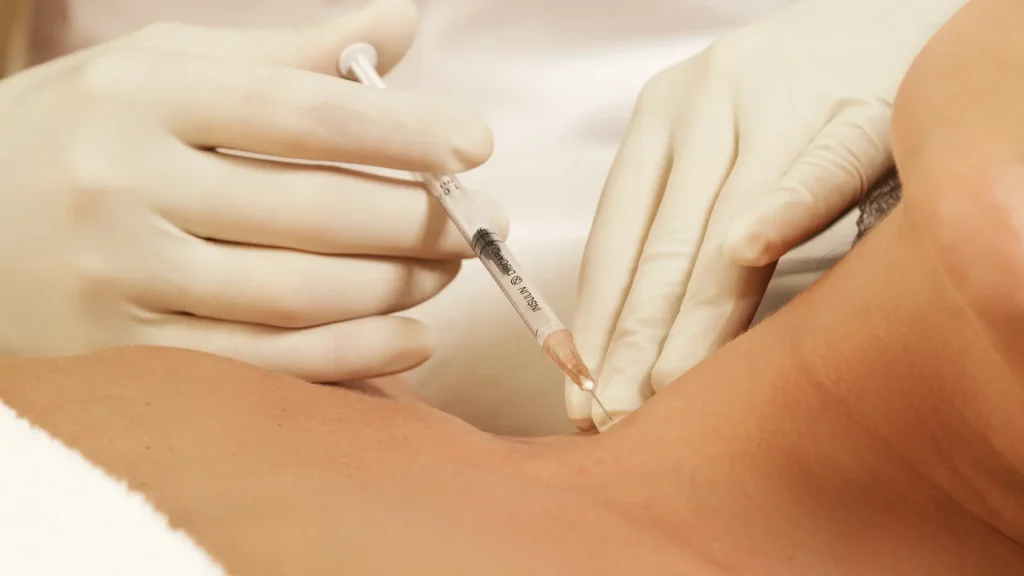
While the specific step-by-step procedure of Sculptra for neck rejuvenation is not readily available online, the treatment process of Sculptra for nasolabial folds or other facial concerns may be similar. Medical professionals must administer these procedures as they know the most appropriate treatment sites and injection techniques.
- Preparing the Patient for the Procedure: Providers should advise patients to avoid certain medications and activities before treatment to minimize complications. Moreover, they must clean and disinfect the treatment area before the procedure. Providers should utilize a lidocaine solution or anesthetic agents at the injection site to ensure patient comfort during the process.
- Injection Technique: Sculptra requires an aseptic technique in every injection, and providers must avoid superficial injections or over-correction. Providers can use the Threading or tunneling technique in a grid pattern or Bolus technique for injection.
- Treatment Protocol: Sculptra injections typically require three sessions to achieve optimal results. Providers must massage the treated area after injection to distribute the product evenly. Apply an ice pack wrapped in a cloth to help reduce the swelling.
Medical professionals also know the best tips for post-treatment care after Sculptra injections. Follow-up visits allow medical professionals to monitor progress and side effects occurrences. Moreover, adhering to these recommendations can help individuals recover safely and minimize risks. Patients should avoid these for the first 24 hours post-treatment:
- Strenuous exercises or activities
- Exposure to extreme sun or UV rays
- Extreme temperatures
Efficacy and Safety of Sculptra for Neck Rejuvenation
A review by Christen (2022) highlighted the effectiveness and safety of poly-L-lactic acid, particularly Sculptra, in rejuvenating the neck and chest. The review encompassed studies on facial and off-face areas and those dedicated explicitly to these regions. Sculptra demonstrated a promising safety profile and favorable efficacy across these studies.
Mazzuco and Hexsel (2009) observed a noticeable improvement between 81% to 100% of the 21 neck and chest correction cases examined. When asked about their satisfaction with the procedure in a questionnaire, 91.6% of participants expressed their pleasure with the outcome and affirmed their willingness to undergo the procedure again.
These positive results were sustained even after an 18-month follow-up period. This study underscores that poly-L-lactic acid (PLLA) administration is considered safe and effective for mitigating signs of aging in the neck and chest areas. This treatment offers a promising approach for those seeking aesthetic improvements in these regions.
Furthermore, a 2021 evaluation of cannula safety in poly-L-lactic acid injection demonstrated that mild adverse events (AEs) such as bruising, swelling, and pain may occur. However, with the correct preparation of the product and the application of proper treatment techniques, providers and patients can effectively minimize and manage these AEs to ensure a safe and successful treatment outcome.
Practical Tips for Achieving Optimal Results with Sculptra in the Neck

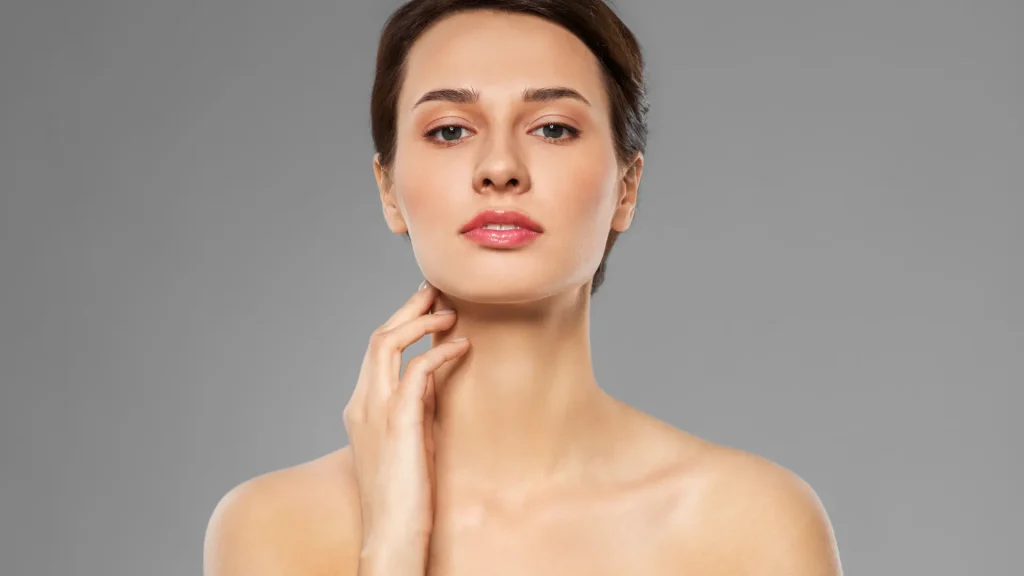
Tailoring Sculptra treatments to individual needs ensures optimal outcomes. Customizing treatment plans based on individual patient needs should consider various factors to enhance the effectiveness of Sculptra injection.
- Age
- Skin Condition and Type
- Medical History and Current Medications
- Aesthetic Goals
In addition, clear communication between doctor and patient about Sculptra’s gradual results and potential side effects aligns expectations with optimal outcomes. Providing patients with comprehensive information allows them to make informed decisions for their treatment.
It’s worth noting that Sculptra has no approved indication for neck rejuvenation but can be combined with other neck rejuvenation modalities for enhanced results. Integrating Sculptra with other treatments like hyaluronic acid dermal fillers or microneedling can comprehensively target volume loss and skin laxity.
Conclusion
Sculptra, a collagen stimulator, has emerged as a promising solution for facial concerns. Its unique mechanism of action, involving the stimulation of collagen production, helps restore lost volume and smooth out wrinkles. Despite its off-label use for neck rejuvenation, providers can personalize treatment, considering the patient’s age, skin condition, and unique facial structures.
Clinical studies have demonstrated the efficacy and safety of Sculptra, with patients reporting high satisfaction and lasting results. Practitioners can achieve optimal outcomes by managing patient expectations and combining Sculptra with other treatments. Sculptra offers a safe and effective option for those seeking to rejuvenate their neck area.
FAQs
1. What is Sculptra, and how does it work for neck rejuvenation?
Sculptra is a dermal filler that uses poly-L-lactic acid (PLLA) to stimulate collagen production and restore lost skin volume in the neck area. When injected, Sculptra works beneath the skin to help rejuvenate the skin’s inner structure.
2. Who is a suitable candidate for Sculptra for neck rejuvenation?
Adult individuals in good health with healthy immune systems are suitable candidates for Sculptra treatments. However, individuals with severe allergies to Sculptra ingredients or a history of severe reactions, as well as those with risk factors for hypertrophic scarring or keloid formation, should avoid this treatment.
3. What are the typical side effects of Sculptra treatments for the neck, and how long do they last?
Common side effects of Sculptra treatments for the neck may include injection site pain, redness, bruising, tenderness, itching, lumps, bleeding, and swelling. These symptoms may resolve within a few days or weeks as the body adapts to the medication.
References
- ISAPS INTERNATIONAL SURVEY ON AESTHETIC/COSMETIC PROCEDURES. (n.d.). International Society of Aesthetic Plastic Surgery. Retrieved June 13, 2024, from https://www.isaps.org/media/pubgf4jc/global-survey-full-report-2019-english.pdf
- Sculptra ® Galderma. (n.d.). In www.sculptrausa.com. Retrieved June 13, 2024, from https://www.sculptrausa.com/docs/Sculptra-e-IFU
- Nikolis, A., Avelar, L. E., & Enright, K. M. (2021). Evaluation of Cannula Safety in Injection of Poly-L-Lactic Acid. Clinical, Cosmetic and Investigational Dermatology, Volume 14, 615–622. https://doi.org/10.2147/ccid.s305479
Clinical aesthetics products refer to a category of products used in the field of medical aesthetics or cosmetic dermatology. These products are typically designed and formulated to be used under the supervision of healthcare professionals, such as dermatologists, plastic surgeons, or trained aestheticians. They are distinct from over-the-counter cosmetics in that they often contain active ingredients or formulations that require expertise in their application or administration.
Examples of clinical aesthetics products include:
-
Dermal Fillers: Injectable substances used to add volume, smooth wrinkles, and enhance facial contours. Examples include hyaluronic acid fillers like Juvederm and Restylane.
-
Botulinum Toxin (Botox): Injectables that temporarily paralyze facial muscles to reduce the appearance of wrinkles caused by repetitive movements, such as frown lines and crow's feet.
-
Chemical Peels: Solutions applied to the skin to exfoliate and improve its texture. They can treat acne, pigmentation issues, and signs of aging.
-
Laser and Light Therapies: Devices that emit focused light or laser energy to treat various skin conditions, including acne, scars, and signs of aging.
-
Prescription Skincare Products: Formulations containing active ingredients like retinoids (vitamin A derivatives), hydroquinone, or prescription-strength antioxidants to address specific skin concerns under medical supervision.



